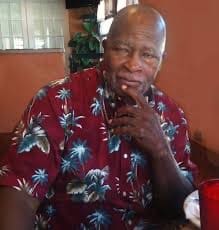Tap On Text To Read
Charles Walker (1945-2022)
Charles Walker, born in 1945 in Fort Pierce, Florida, developed an early passion for art, beginning to draw at the age of five. He attended Lincoln Park Academy, where he was a student of Zanobia Jefferson, an influential art teacher who also taught several other Highwaymen painters. By ninth grade, Walker had won his first art competition, establishing himself as a talented young artist.
Despite his early interest in art, it wasn't until his twenties that he began to pursue painting as a career. His wife, Gertrude, who was the sister of Highwaymen artist Livingston Roberts, played a significant role in encouraging his artistic endeavors.
Walker distinguished himself from other Highwaymen through his meticulous and detailed approach to painting wildlife and natural scenes. Unlike the fast-painting style commonly associated with the Highwaymen, Walker took his time, sometimes spending up to a month and a half on a single piece.
His works often featured birds, fish, and other animals, depicted with a scientific precision that set his art apart. Walker's dedication to capturing the beauty of Florida's wildlife and landscapes earned him recognition as a major wildlife artist in the 1970s and 1980s, well before the Highwaymen gained broader acclaim.
Throughout his career, Walker continued to evolve as an artist, drawing inspiration from his outdoor explorations, childhood memories, and the natural beauty around Fort Pierce. He was inducted into the Florida Artists Hall of Fame in 2004, a testament to his significant contributions to the art world.
Walker remained active in his craft until his death in 2022, creating one or two paintings a month.
His legacy endures through his richly detailed and evocative depictions of Florida's natural habitats, making him a respected figure among the Highwaymen and in the broader art community.
